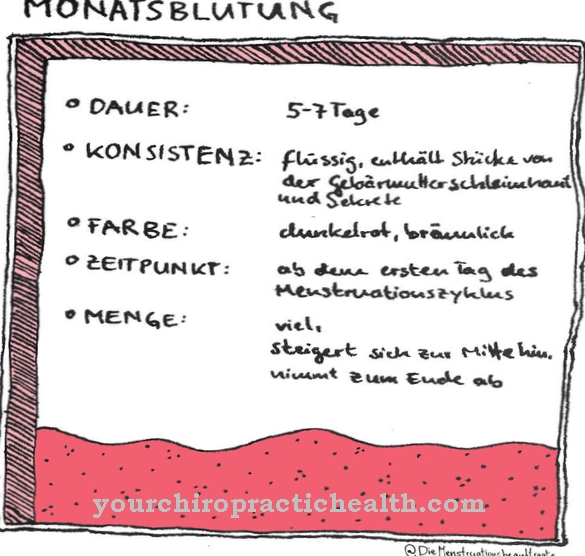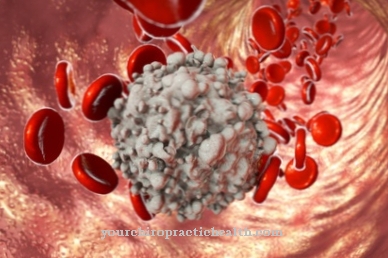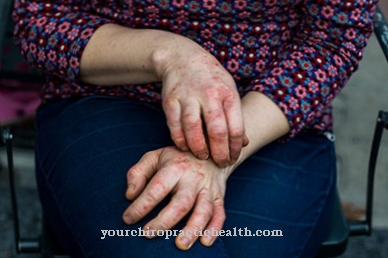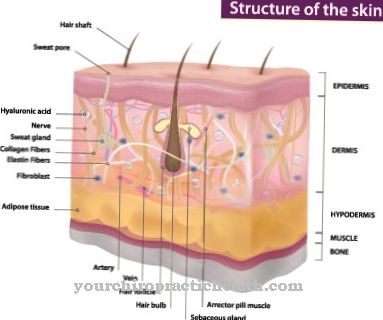As boil the infection of a hair follicle is called. Boils are common and their development is independent of age, physical condition, or gender. In many cases, they will heal without further treatment, but their symptoms can be relieved. Boils require medical attention only in more severe cases.
What is a boil?

© andriano_cz - stock.adobe.com
Boils occur when bacteria or fungi find their way into the hair follicle in the skin. This mostly affects the regions where there is increased sweating or where there is friction from clothing.
Staphylococci are particularly common in causing the infection. It not only affects the hair follicle, but also extends to the surrounding tissue in the course of the disease. The region around the infected hair follicle fills with fluid as the infection progresses and the typical swelling of a boil occurs.
The skin over the boil is stretched and feels hot because of the inflammation. Multiple boils can appear close together or merge into one another. This local cluster is called carbuncle.
causes
The cause of the formation of a boil is found in damage to the hair follicle. This can be due to injuries or in particularly stressed parts of the body such as folds of skin or the lower back.
The damage gives bacteria from the surface of the skin the opportunity to penetrate deeper and by infecting the hair follicle to cause the boil.
Poor personal hygiene is also a cause that encourages boils to develop. Pressure sores with damage to the upper layer of the skin or chafing in the groin from clothing are also known to be a factor in the development of boils.
Symptoms & course
A boil is usually a harmless but often very painful local inflammation on a hair follicle. A painful, very tense reddish lump that is 0.5 to two centimeters in size develops on the affected skin area. In the center of the inflammation, tissue death occurs, which is also known as necrosis.
Pus develops inside the boil, which creates the strong feeling of tension. After a while, the plug of pus empties and the boil recedes. Typical local symptoms of a boil are severe pain, redness, overheating in the affected area and swelling. Other general symptoms only occur in rare cases.
These are tiredness, exhaustion and general physical weakness. Boils can appear on the face, ears, anus, or pubic area. The additional symptoms often also depend on the location of the boil. Boils in the facial area cause greater discomfort.
Complications can arise, especially if they appear on the lip or nose. This enables life-threatening sepsis to develop. Facial furuncles can also cause inflammation of the eye socket. There is also a risk of meningitis or a clot in the brain. In the case of severely immunocompromised patients, lymph node inflammation may also occur.
Complications
Various complications are possible in the course of a boil. This risk is particularly acute when a carbuncle is formed, which is made up of several boils. In such cases there are often pronounced general complaints. In addition, lymphangitis can also occur, in which the lymphatics become inflamed and the lymph nodes swell.
A particularly worrying complication of the boil is sepsis (blood poisoning). The bacteria that are responsible for the boil penetrate the body's bloodstream. The effects of the boil, however, depend largely on its position. For example, a nasal furuncle can have life-threatening consequences if the triggering staphylococcal bacteria are transported with the venous blood into the bloodstream of the head.
At this point there is a risk that the germs cause phlebitis, meningitis or cerebral sinus vein thrombosis. Diseases of the eye socket are also possible. In medicine then we speak of orbital phlegmon.
The patient should never press a boil on his face or nose with his fingers because of impending sequelae. As a result, the pus-filled accumulations of staphylococci can get into neighboring veins and cause life-threatening complications in the brain. However, if it is a boil with a favorable course, dangerous sequelae are rarely to be feared.
When should you go to the doctor?
If a painful swelling is noticed on the skin, it may be a boil. This usually heals on its own and does not require any medical care. A doctor should be consulted if the inflamed hair follicle does not open on its own or breaks inwards. If the boil becomes infected, medical advice is also required. The spread of the infection to the surrounding tissue must be clarified before serious complications such as secondary infections or sepsis set in.
If other symptoms such as fever or chills occur in addition to the accumulation of pus, a visit to a doctor is recommended. A reddish stripe that runs from the boil towards the heart indicates blood poisoning that requires immediate treatment. It is best to take the person to a hospital straight away. People who are more likely to have boils or abscesses should speak to a dermatologist. The symptoms may be due to a serious illness that needs to be clarified and treated.
Doctors & therapists in your area
Treatment & Therapy
Boils in the head area should always be treated by a doctor. First, antibiotic ointments are used to limit the infection locally. In addition, it is possible to accelerate the development of the boil by using pulling ointments. It will open and the fluids will be able to drain away. Particular attention must be paid to hygiene, because the contents of a boil are highly infectious.
With smaller boils, heat helps, which also ensures that the boil rises and empties. A boil is only opened prematurely if it is particularly painful or does not open by itself. This is done through a medical intervention under local anesthesia with subsequent wound care.
In the majority of cases, however, the course of the disease is uncomplicated and the boil opens by itself without further action. The open wound is disinfected and the boil heals in a few days.
prevention
The main way to avoid boils is through careful personal hygiene. Since tight clothing is another trigger for boils, underwear with too tight ankles should be avoided. Especially in the folds of the body on the thighs and under the armpits, the friction leads to skin damage, which makes it easier for bacteria and fungi to penetrate and causes a boil.
Aftercare
A single boil does not require follow-up care if it is completely healed. It is mostly a follicle inflammation. If changes in size or in the degree of inflammation can be seen in the supposed boil, it could be a carbuncle - a fusion of several individual boils - or a fistula. In this case it is advisable to see a doctor.
If there was a furunculosis with extensive furuncle infestation, it looks different. It is necessary to look for possible causes here. These are often related to an unsuitable diet. Often boils can be found in the genital area. They form, for example, on the pressing edges where the panty ends sit.
Those who tend to boils after shaving their intimate areas should better refrain from doing this. Boils can cover the buttocks. You are then difficult to treat yourself. A change in diet to wholesome and nutrient-rich food can work wonders.
It is best to closely observe the healing process of a boil. For aftercare, an antiseptic healing ointment can be applied to a healing boil. Clamping clothing should be avoided in the future. The diet should be low in fat and rich in vitamins.
Dietary fiber is essential to relieve the strain on the intestinal system. The presence of many fats or waste products from unhealthy food can promote the formation of boils. Therefore, some changes in the previous way of life are conceivable in the aftercare phase.
You can do that yourself
Under no circumstances is the infected area to be manipulated in any way or the boil to be expressed. Improper handling of boils can cause the microorganisms that cause inflammation to enter the bloodstream. Therefore, the inflamed areas should be left completely alone.
As a support for medical treatment, boils or abscesses can be alleviated by bathing in the air or in the sun. The corresponding area is freed of textiles and exposed to daylight or the outside air.
Hot toppings, for example with chamomile stock, also alleviate the pain associated with boils. A chamomile bath also has a calming effect. This can be done as a partial bath (only the affected area) or as a full bath. It should be noted that the bath water is not too hot. Under no circumstances should you experiment with fatty creams or alcohol-containing tinctures, as this could worsen the inflammation.
Antiseptic teas, fresh ginger and turmeric, used internally, can also have a soothing and beneficial effect. Alcohol, nicotine and caffeine, on the other hand, should be avoided, as well as overly spicy and especially spicy dishes. An alkaline diet promotes healing. Steamed vegetables should be in the foreground here and little salted. A meat-heavy diet can be counterproductive.
Boils are local inflammations, they are not transmitted. Those affected can continue to interact as they please and also go about their everyday work. However, stress and great exertion should be avoided.



.jpg)




















.jpg)



